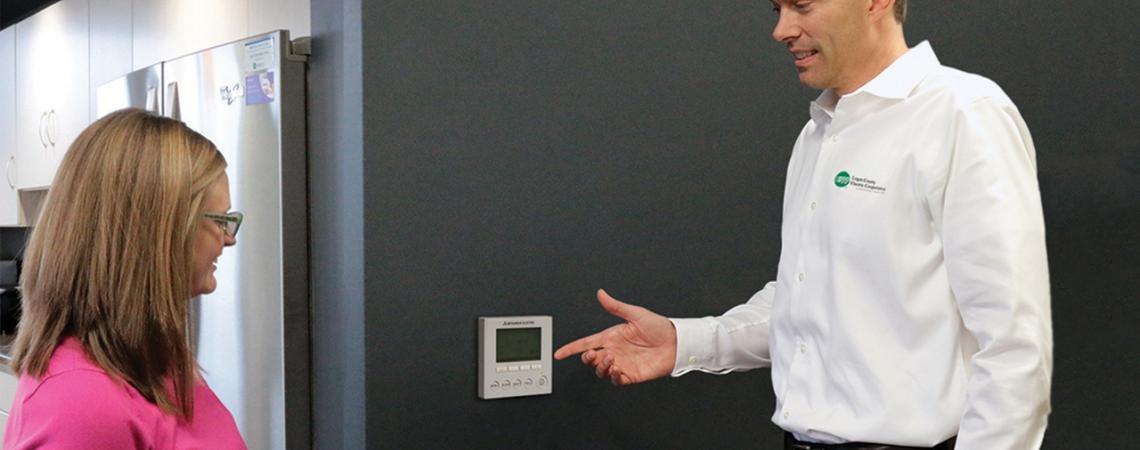Michael Wilson, an energy advisor at Logan County Electric Cooperative, demonstrates a programmable thermostat.
If you still have an old dial thermostat controlling the temperature in your home, you might take note of new technology available that lets thermostats do things they never could before. That said, it’s worth asking if these new thermostats can save enough money to justify the extra cost.
There are three main types of thermostats: manual, programmable, or smart.
The main benefits of a manual thermostat are that it’s simple to operate and there are no batteries to wear out and replace. You just have to remember to raise and lower the temperature setting in the morning and evening, and whenever you leave the house.
Programmable thermostats typically allow settings for four different periods each day, and some models can even handle a different schedule for each day of the week. You control the settings so they will suit your climate, schedule, and temperature preferences.
A smart, or “learning” thermostat connects to your home’s Wi-Fi network. After installation, you input the basics of your schedule and temperature preferences. Over time, as you change the settings, it learns your schedule and adjusts to minimize energy use. Smart thermostats can also detect when no one is home and can be controlled remotely with an app on your smartphone or tablet.
The move to smart technology, though, is a significant investment. Units can cost up to $400, though prices are coming down. It’s also important to note that not all homes have the proper wiring in place to accommodate smart thermostats, so you may need to hire a professional to handle the installation.
How much a thermostat can save depends on how much you spend on heating and cooling your house.
You can estimate your heating and cooling expenses by examining the bills related to heating your home. Compare the bills for winter and summer to those for spring and fall. Most of the difference is likely due to heating and cooling. If that amount is more than $900 per year, which is the national average, you have a better chance of a good return on your investment.
The second factor that will determine how much you can save is how you are operating your old thermostat. If you are conscientious about adjusting the temperature to save energy when you’re leaving the house or going to bed, the new thermostat may not reduce your bills that much, even if you program it correctly or if it learns your behavior.
Pat Keegan writes for Collaborative Efficiency, an energy communications company.









